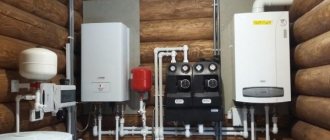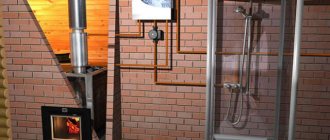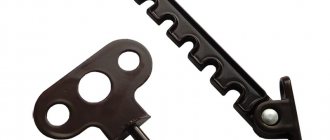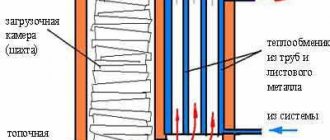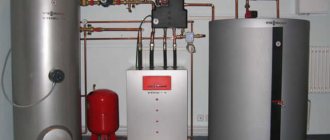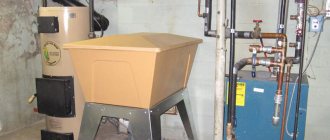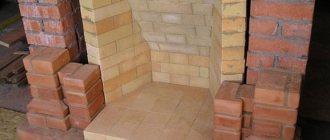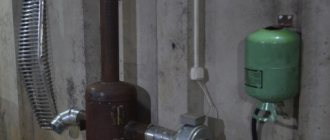Many city apartments today have central heating. It just so happens that the main housing stock in our cities is included in the service sector of utility companies. First of all, this relates to the issues of ensuring heat supply to city apartments during the heating season. The quality of the centralized heat supply system to consumers has always left much to be desired. The reason lies in the inefficiency of the existing service procedure. In addition, rising energy prices are forcing people to look for alternative ways to heat their homes.
Many apartment owners are trying to switch to autonomous heating of their apartments. What difficulties do you have to face in this case and how to make heating yourself - these are the main issues that concern our citizens today. We will try to solve the problem together and find answers to pressing questions.
Selection of radiators and pipes
Any heating system has its own characteristic features that must be taken into account in order to know exactly how best to heat the apartment. What makes the choice of heating devices special in all this is that where some batteries are ideal, others will not be efficient or reliable enough.
The simplest and most painless solution related to the choice of heating components is to contact specialized specialists who will conduct a full analysis of specific conditions and select the most suitable elements for them. However, with a competent approach to the matter, you can carry out this work yourself - it will be enough to consider the features of all possible components and figure out under what conditions a certain type of element should be used.
What to do and who is to blame if a ruptured heating riser pipe floods your neighbors?
Let's consider the legal side of the issue of flooding, which can occur as a result of leaking heating pipes.
So, there is Decree of the Government of the Russian Federation No. 491 dated August 13, 2006, which determined that the common intra-house property includes a heating system along with risers, radiators, control and shut-off valves, common house heat energy meters and other equipment on these networks.
The management company servicing the house must check the equipment twice a year and, at its own expense, fix problems, replace damaged radiators, pipes, etc. However, if access to the apartment was not provided to inspect the condition of the pipes and equipment, the owner of the property will be to blame for all further consequences.
Further. If the owner independently decided to replace pipes, radiators, etc. without agreement with the management company - responsibility for the consequences passes to the owner.
It is recommended to keep all receipts and enter into contracts when carrying out any work on the heating system so that the issue can later be resolved in court.
Attention! There is a decision of the Supreme Court of the Russian Federation dated September 22, 2009 (No. GKPI09-725), which excludes radiators with shutdown devices in apartments from the common property of the house.
*
Therefore, this type of issue is always controversial, starting with the legislative acts themselves.
Documents required to file a claim in court:
- inspection report of a flooded apartment,
- expert assessment of the damage caused,
- photo and video materials with the consequences of the accident.
And, of course, take contracts, checks, etc. with you. (if any) associated with the application.
If the management company is at fault, then it is obliged to compensate the damage to the owner of the “emergency” premises and the owner of the damaged premises within 30 days.
If the owner is at fault, then the best solution would be to draw up a peace agreement and pre-trial compensation for damages. This will save time and nerves on both sides.
And finally, the most important advice: prevention, control and timely repair will save you from future problems with heating systems.
Cast iron radiators
Heating appliances made of cast iron have a long service life and fairly high heat transfer. In addition, a very important feature of cast iron batteries is their inertia - cast iron takes a very long time to gain heat, so it takes a lot of time to warm up the system, but if the coolant supply is stopped, the accumulated heat will flow into the apartment for several hours.
A noticeable disadvantage of this type of battery is its heavy weight. This factor, firstly, significantly complicates transportation, and secondly, it places special demands on installation technology. You won’t be able to install cast iron radiators yourself, and they can only be mounted on solid walls that can withstand high loads, since the weight of a cast iron radiator is considerable..
The internal volume of cast iron batteries is quite large, so heating them requires a large amount of coolant. From this we can conclude that using such radiators in combination with an electric boiler is extremely unprofitable. For centralized and gas heating, cast iron heating devices are ideally suited.
House heating - gas installation
Heating, in which heat is obtained by burning gas, also requires proper installation. Gas heating can come from the city network.
Attention! City gas will only be available where there are gas pipelines, and there are much fewer of them than district heating pipelines.
Aluminum and bimetallic batteries
These types of batteries are excellent for apartments with centralized heating. The fact is that the coolant in such systems has a lot of contaminants and negative features, such as high rigidity. Bimetal perfectly withstands such influences and does not rust due to exposure to moisture and air. Another advantage worth noting is the ability to vary the number of sections, unless these are monolithic batteries.
The main and most obvious disadvantage is the high cost of products made of aluminum or bimetal. The second point, which can partly be attributed to disadvantages, is the weak ability to accumulate heat, i.e. Radiators cool down quickly when the system is stopped. However, if there are no problems with heat supplies, then this factor can be safely discounted.
Insulating mats
Whether you decide to replace radiators or not, you still need to think about how to cut off the flow of heat that goes out. For this, there are special aluminum insulating mats that are installed on the wall behind the heating radiator. If we take a block Khrushchev building, then with installed mats, the heat transfer from the battery increases by 20 percent.
The insulating mat is easy to install. It is necessary to cut holes in the insulation for the hooks on which the radiators hang. Apply silicone or mounting adhesive to the wall itself. Next, we take the insulating screens, put them on hooks and press them against the wall, gradually smoothing them out. You should not use insulating mats made of mineral wool. The glass contained in the product may harm your health. Thermal insulation mats must be made of natural or organic fibers.
If you want to give an aesthetic appearance to old radiators, then special radiator screens are needed. Many people make them themselves, many buy them. Remember that not every screen will be good, as thermal conductivity should also be taken into account when installing them.
Steel panel batteries
Heating appliances made of steel are, perhaps, the optimal combination of price and quality. The efficiency of steel radiators is quite high, the service life is quite long, and the price is not so high that it can be considered unjustified. In addition, it is also worth noting the relatively light weight of such devices and, as a result, simple installation.
A characteristic disadvantage of standard steel appliances is their susceptibility to corrosion, which can significantly shorten the life of radiators in the heating system. In order for devices to work properly, they need high-quality and regular maintenance. In addition, to prevent corrosive effects, you should try not to drain the coolant for a period longer than a week - moisture combined with air can seriously damage the internal parts of the radiators.
Range of procedures
Heating maintenance and repair consists of the following activities:
- elimination of leaks that occur in pipelines, devices and shut-off or control valves;
- replacement of damaged sections of devices and taps;
- elimination of “reverse slopes” appearing on pipelines;
- installation of air-bleeding valves in areas where it is impossible to level out reverse slopes or air plugs;
- elimination of breakdowns that occur in the control unit or boiler heating system;
- testing and, if necessary, replacement of failed measuring and control instruments;
Maintenance of the heating system of a private home includes preventive work on various elements, including washing and painting. The heating system is flushed and adjusted every year at the end of the season.
Selection of heating pipes
Only a few types of pipes are used for heating systems, so there will not be any particular difficulties in choosing them:
- Steel pipes . This material has very high mechanical strength, so it is not afraid of various external damages. Another thing is that steel is susceptible to corrosion, so it can be damaged from the inside. Steel pipes accumulate heat well and partially influence the intensity of convection in the room. Installing heating in an apartment using steel pipes requires welding, so this work requires relevant experience or a good specialist.
- Metal-plastic pipes . One of the most inexpensive and easy-to-install pipe options for a heating system. The disadvantage is the large number of connections, which greatly increases the likelihood of circuit leaks. To reduce the likelihood of leaks to a minimum, you need competent heating wiring in the apartment and careful monitoring of it during operation.
- Plastic pipes . Another relatively inexpensive option that has a lot of positive qualities. Among the advantages are resistance to rotting and corrosion, as well as the highest reliability of the connections - they are processed using soldering, and if the work is done correctly, the seams will never leak. This material has no particular disadvantages, but you need to pay close attention to the characteristics of specific products when purchasing them.
When trying to decide which pipes to use for heating in an apartment, we can conclude that the best option, other things being equal, would be plastic pipes, which are excellent for self-installation. Radiators can be selected individually - they are connected in exactly the same way, and the whole difference lies in the individual compatibility of the heating system and the specific type of radiator.
Wiring diagram
Developing, drawing, designing and approving a heating scheme for a new building or at least moving a radiator to another location is the subject of a separate article, not even several articles. Therefore, we believe that we are only talking about the reconstruction of heating in a city apartment and all the batteries remain in their places.
Methods for connecting heating radiators
In this case, the general heating scheme of the house remains as is, and we only need to choose the method of connecting the radiators to the riser. There are four options, see fig. Bottom connection – for hidden wiring. It is important not to forget about TWO ball shut-off valves for each radiator, for supply and return; they are highlighted in color in the left picture. In the event of a leak, this will allow you to disconnect one battery without affecting the entire system.
For steel and metal-plastic with aluminum radiators, do not forget about propylene inserts to avoid electrocorrosion. They are also highlighted and labeled on the left.
Tools and materials for installation
In addition to pipes and batteries, the choice of which was discussed above, installing a heating system in an apartment requires tools, the set of which is as follows:
- Fittings and taps;
- Silicone sealant or tow;
- Fastening elements for system elements;
- Set of screws and dowels;
- Soldering iron for pipes;
- Pipe cutting shears;
- Set of wrenches;
- Screwdriver;
- Hammer;
- Construction and water level;
- Tape measure and pencil.
This set of tools is sufficient for arranging a heating system. If you are planning a one-time job, then it is advisable to rent specialized tools (like a soldering iron for pipes) rather than buy them - the cost of such devices, especially professional ones, is quite high.
Overview of the necessary equipment for an autonomous heating system
Gas or electricity. What's better
Do-it-yourself heating installation begins with studying the project. All work must be carried out in strict accordance with technical documentation. Changing the method of heating an apartment on the fly, installing a boiler of greater power than specified in the project and increasing the number of radiators is fraught with troubles.
Digression: During the test launch of a finished heating system, a heating engineer must be present, who is responsible for the functionality of the new gas equipment. If there are obvious discrepancies between the available equipment and the technical data specified in the project, you may be refused to issue an official conclusion on the commissioning of gas heating.
Therefore, you need to decide in advance what is best for you - gas heating or electric heating, and which heating devices to install. The following requirements must be taken into account:
- coordination of project documentation with the energy company supplying gas or electricity;
- when installing gas heating, it will be necessary to install a coaxial chimney on the street;
- in the case of electric heating, it will be necessary to re-equip the home electrical wiring, install a three-phase meter and electrical circuit breakers;
- apartments equipped with gas boilers require installation of supply and exhaust ventilation;
- Direct connection of the boiler to the pipeline and start-up work is carried out by an authorized person, a representative of the gas distribution organization.
How to properly connect heating equipment, how to install a boiler and start the entire heating system in accordance with established standards, it is better to contact specialists on these and other issues.
It would be appropriate to remind you that choosing electric heating will not give you advantages and real savings. Heating an apartment directly with electricity is an expensive proposition. Only by installing a multi-tariff meter will you be able to achieve a tangible economic effect. Often restrictions on the operation of electric heating are imposed by an established consumption limit. Excessive consumption of electricity will lead to unexpected costs for light and worsening temperature conditions.
Installation of a heating system in an apartment
Do-it-yourself heating installation in an apartment includes the following steps:
- Before turning on the heating in the apartment, you need to mark the places where the elements of the heating system will be located. Radiators are most often mounted at the same level, for which it is enough to move the first mark to all other installation points of heating devices.
- Next, you can install radiators. This work is not particularly difficult - all you need to do is prepare holes in the walls, secure the fasteners with dowels and hang radiators on them.
- The next step is preparing the pipes. At this stage, you need to determine the distances between the radiators, where the pipes will be located, and also solder these pipes in a suitable way. If the work is not carried out alone, then an assistant can be sent to screw fittings into the radiators.
- System assembly usually begins from the point at which heated coolant is supplied to the circuit, as well as from the point at which the coolant returns. A special feature of these sections is that there is no need for soldering - the steel pipes of the boiler usually have a thread cut into them, the connection to which is carried out using adapters. Subsequently, these adapters are soldered to plastic pipes.
- Further work consists of laying all other sections of the supply and return pipes. The last stage is the installation of bends to the radiators, installation of corner valves and connection of radiators with pipes.
System test
Hydraulic testing of the system is performed upon completion of flushing and, as a rule, confirms the successful repair of heating systems. Such tests should only be carried out during warm months. First, all shut-off valves are opened: this equally applies to the valves that are located on the air collectors. Then a special hydraulic press is connected to the heating system - it supplies water.
Filling the system with water must occur slowly, otherwise air will remain there. When liquid appears in the air collector valves, they must be closed. Next, the hydraulic press releases the specified pressure, which should be 1.25 times greater than the working pressure. After 5 minutes, the indicators are checked: the pressure should not drop by more than 0.02 MPa.
If everything went well, and tests showed that there is no need for repairs, the heating system is preserved and put back into operation in the house only at the beginning of the next season. Preservation consists of filling pipelines and other areas with clean working fluid, which is taken from the heating network.
Differences between one-pipe and two-pipe systems
A two-pipe heating system is considered the most reliable, since heat loss is minimal. This is exactly what the heating system of an apartment building is like. The coolant, which is water, flows from the supply pipe into the radiator, and from it returns to the “return”. Pipes can be located in different ways - running in pairs, near the floor, under radiators. There is also an option when the supply pipe is located on top of the radiator. A one-pipe system looks different. In this case, the water entering the radiator returns to the same pipe, but it already has a lower heating temperature (about
Heating repair instructions
Before painting, the old layer from the radiators is removed with chemicals or a brush.
Without interfering with the overall heating system, the apartment owner can independently carry out a number of measures to improve its operation within his property.
You should start by repairing cast iron heating radiators. These products have a large volume, which is why the circulation rate in them is weak, and this leads to the formation of sediment. Over time, it becomes denser, deposited in the ribs, and blocks the channels. It's faster to change batteries, but it's quite expensive.
Restoration of old cast iron radiators is carried out in the following sequence:
- If there are taps in front of them, place them in the closed position.
- Unscrew the connecting nut. As a rule, this cannot be done right away. High heat is used to loosen the connection.
- Remove the battery from the brackets and drain the water.
- Carry out initial mechanical cleaning from the inside. After removing the hard deposits, seal the holes with plugs and pour a 10% citric acid solution inside.
- Leave for 30-40 minutes, drain the liquid, check the result. If necessary, repeat the procedure.
- Remove old paint from the exterior surface. To do this, use a wash, a manual sandblaster or an angle grinder with a metal brush.
- If intersection gaskets are leaking, replace them.
- Paint the radiator with acrylic heat-resistant paint and wait until it dries completely.
- Hang the battery in place and connect it to the pipes.
Pipes and collectors can be cleaned with a cable and a brush.
While the radiator sits with acid and dries after painting, you can start piping. Horizontal spans are often clogged with dirt and limescale. Getting rid of deposits is easy. To do this, you need to take a cable with a brush, insert it into the pipe and start moving it until the hole in the riser is reached. To achieve a better effect and speed up cleaning, add household detergent with an abrasive to the brush. The achieved result is checked visually using a flashlight for illumination.
Quite often, due to corrosion or poor-quality welding, leaks occur in pipes and radiator housings. These phenomena cannot be ignored, since the holes will constantly increase.
In such cases, you should proceed as follows:
- Turn off the water and drain the problem area. Sometimes you have to temporarily dismantle it.
- Peel the paint around the hole down to the metal. Widen the gap using a thin drill. Check that there is no rust left. Degrease the material with acetone.
- Seal the hole. To do this, you can use mastic or a rivet with a silicone washer. If there is welding, it is better to make a metal patch.
If there is no sealant or rivet at hand, the hole is closed with a clamp, under which thick rubber is placed. This method is unaesthetic, but the clamp will do its job until the end of the heating season. After draining the water from the system, you need to carry out high-quality repairs.
Air option - old proven method
It should be noted that it is one of the oldest heating methods and was popular even before our era. Of course, during this period a lot has changed and improved, but the essence of the method has remained the same. In this case, warm air is used for heating, which is supplied to the housing. Air heaters serve as heating devices.
Heaters for supplying warm air to the house
It is very easy to adjust the heating temperature, and you can set it to a minimum, for example, during the day or if you are going to leave for several days, and when you return back, increase it to the required limits. This system is optimal for areas with high humidity, because it dries the air, but if this is not necessary, then you should simply use it in conjunction with humidifiers. In addition, more complex systems are equipped with ionizers, cleaning filters and can supply cooled air in the hot summer, thereby providing the most favorable microclimate all year round. You can also combine this type with a wood stove, so you can easily heat the house, even if there is a failure with the central system. And installing heating of this kind will not cause any particular difficulties.
Algorithm of actions when replacing pipes (instructions)
To ensure normal operation of the heating system, it is better to resort to a radical change of pipes for all neighbors above and below. However, it is not always possible to persuade the residents of the entrance to hold such an event, so the riser will have to be cut only within the confines of their apartment.
You should also keep in mind the fact that the riser is community property. Therefore, you do not have the right to make sole decisions regarding his fate. You can experiment with a pipe only within your own home.

